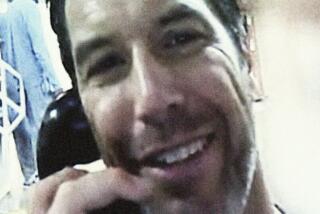Why Pratt Case Didn’t Grab More Attention
- Share via
More than most cases, certainly much more than the O.J. Simpson story, the saga of Elmer “Geronimo” Pratt has symbolized the African American community’s grievances against the criminal justice system.
Yet, from Geronimo Pratt’s 1972 trial for the murder of a woman on a Santa Monica tennis court to last week’s decision by Orange County Superior Court Judge Everett W. Dickey to grant him a new trial, the Pratt case has never generated the total public preoccupation in the black community that characterized the Simpson trial.
The explanation is found in history, in the attitudes of the black community and the mainstream media toward the revolutionary organization that Pratt helped lead, the Black Panther Party, and toward the powerful, often undisciplined, sometimes lawless, protests that were sweeping through the United States in the ‘60s and ‘70s.
*
“There is no question the Geronimo Pratt case was a classic example of a political trial and a legal assassination of an African American activist,” said John Mack, who heads the Urban League in Los Angeles. “But one of the reasons the Pratt case did not have the overwhelming, universal appeal that the O.J. case or the Rodney King case had was that Geronimo Pratt and the Black Panther Party were very controversial in the African American community, as they were in the white community. . . . Some people questioned whether some of the things they did were illegal.”
Or as black writer Karen Grigsby Bates put it, “For the most part, black folks are fairly conservative about law and order and a lot of people in the ‘60s, particularly of my parents’ age, people who were activists but [pro-] integration, equal-rights activists, found the Panthers very off-putting. Some people found them almost anti-American.”
Kenneth Thomas, publisher of the Sentinel, which serves the black community, said, “They were given an image that was less than American and the general feeling in the African American community was they did not want to be associated with that group.”
Constance Rice, attorney for the NAACP Legal Defense Fund, recalled that the FBI’s secret campaign against militant and radical organizations further harmed the Panthers’ image. “I don’t think communities were aware of the depth and breadth of the juggernaut launched against these groups,” Rice said.
Bates, Mack, Thomas and Rice were speaking of a time when the nation’s fevered political atmosphere reached a red-hot intensity in Los Angeles, the temperature constantly driven up by television, just coming into its own as a media power. When I came here from quiet Sacramento to cover political events for the Associated Press during this period, I was both amazed and appalled by the fevered and even inflammatory comments of some of the TV news anchors toward raging social unrest.
Los Angeles suffered through a series of wrenching events--including the Watts riot, the student rebellions, the epic battle between Los Angeles police and anti-Vietnam War demonstrators at the Century Plaza Hotel and the assassination of Robert Kennedy. Underlying it all, intensified by the fallout from the Watts riot, was growing racial tension, including increasing white fear of black militancy, which many equated with crime.
With Pratt’s trial, it all came together--a deputy minister of defense of a revolutionary black organization accused of a black-on-white murder.
Pratt was convicted of shooting and robbing a white man and woman who were playing tennis at Lincoln Park in Santa Monica. The woman died, but the husband survived and identified Pratt as the robber. Key testimony came from another Black Panther who turned a police informant. He said Pratt confessed the crime to him. It was the prosecution’s failure to disclose that witness’ role as an informant that prompted the judge to order a new trial last week.
This prosecutorial suppression of evidence was repeatedly brought up by the small biracial group of Pratt supporters who have long demanded a new trial. Their fight was generally ignored by the mainstream media, with the exception of a few reporters, including my past colleague at The Times, Austin Scott, and a current colleague, Ed Boyer.
For the mainstream press was also traumatized by the events of the late ‘60s and ‘70s, as were their readers and viewers. When armed Panthers marched into the state Capitol or shot it out with the LAPD in South Los Angeles, reporters and editors were as confused and angered as their readers and viewers.
As a result, the Pratt case lacked one of the critical elements of the O.J. phenomenon: intensive news coverage that tapped into a base of black community support.
Without the coverage, without the support, the story lacked that quality beloved by the news bosses--”legs,” the ability to sustain itself for a long, long time.
*
Pratt never would have been O.J. He was not a famous jock or celebrity. The case had no sex, no Hollywood.
Still, a lot of news coverage, combined with a grass-roots outpouring from the African American community, would have increased pressure on judges, police and prosecutors to reexamine the case.
That didn’t happen and Geronimo Pratt had to wait more than a quarter of a century, more than half his life, for his deserved day in court.
More to Read
Sign up for Essential California
The most important California stories and recommendations in your inbox every morning.
You may occasionally receive promotional content from the Los Angeles Times.










